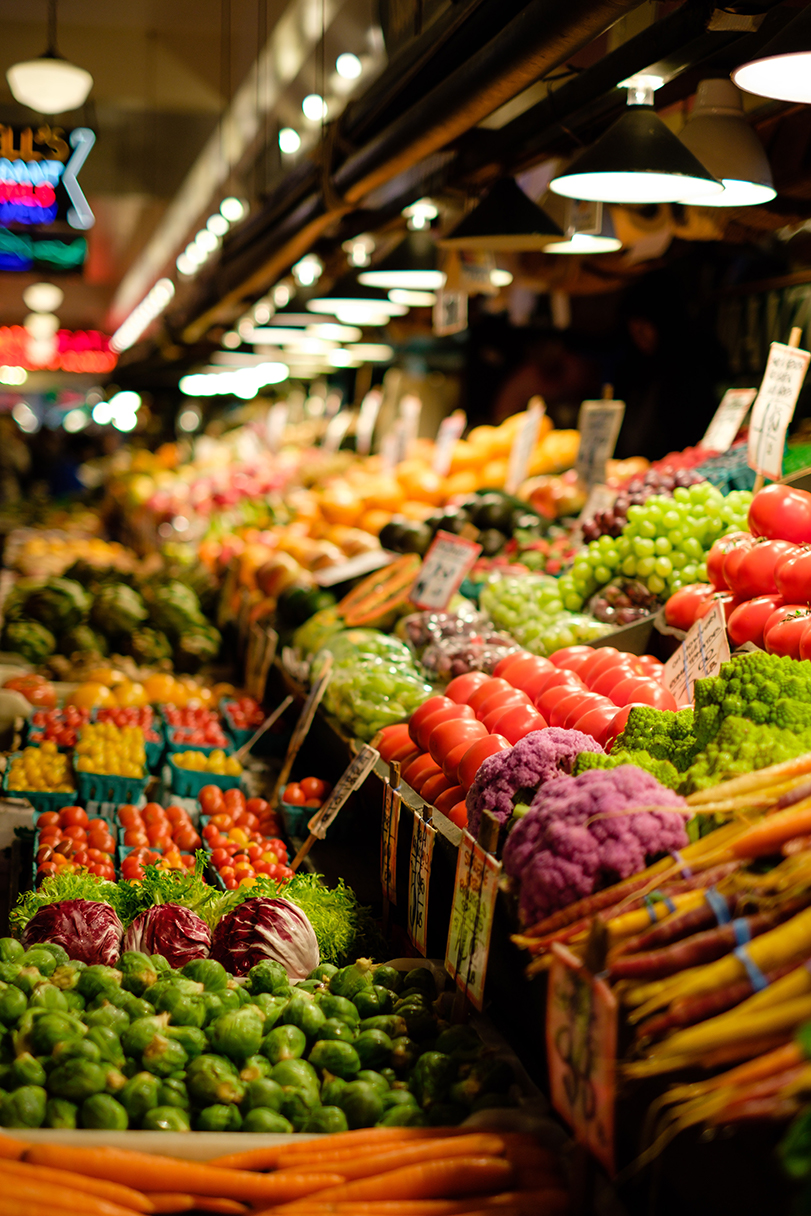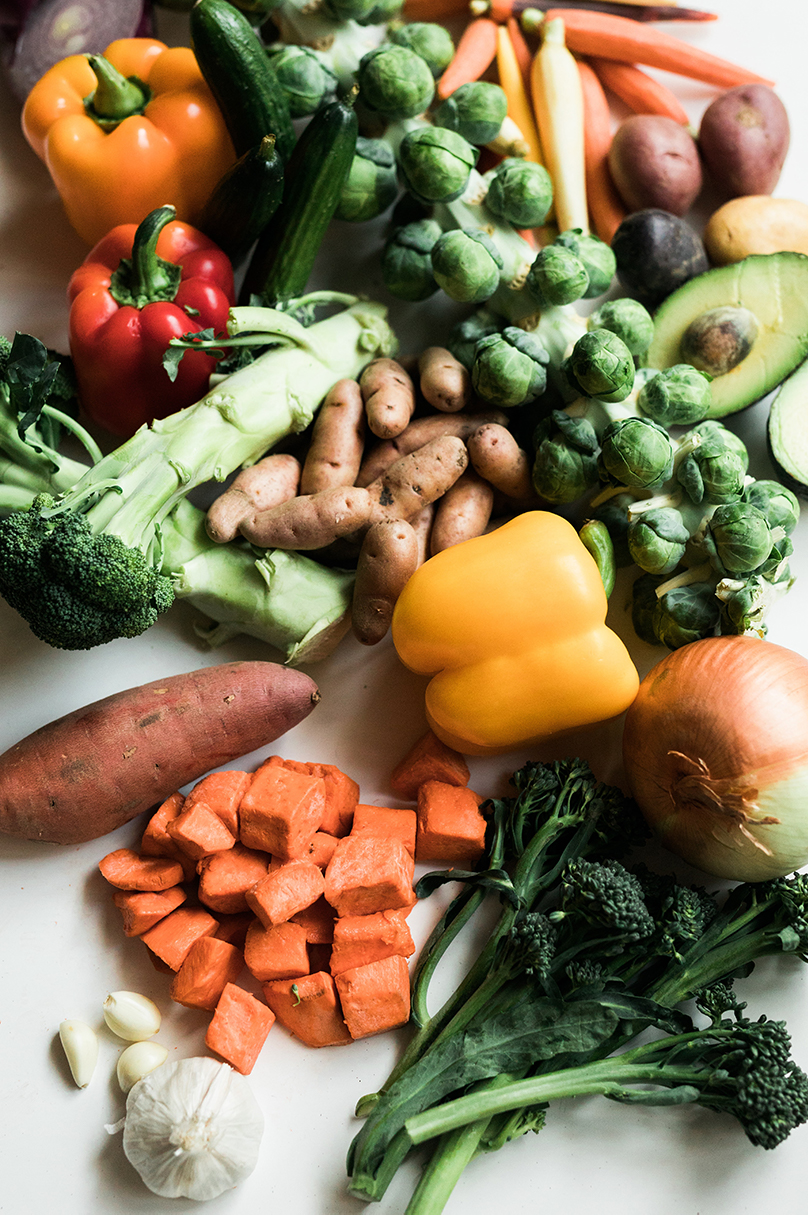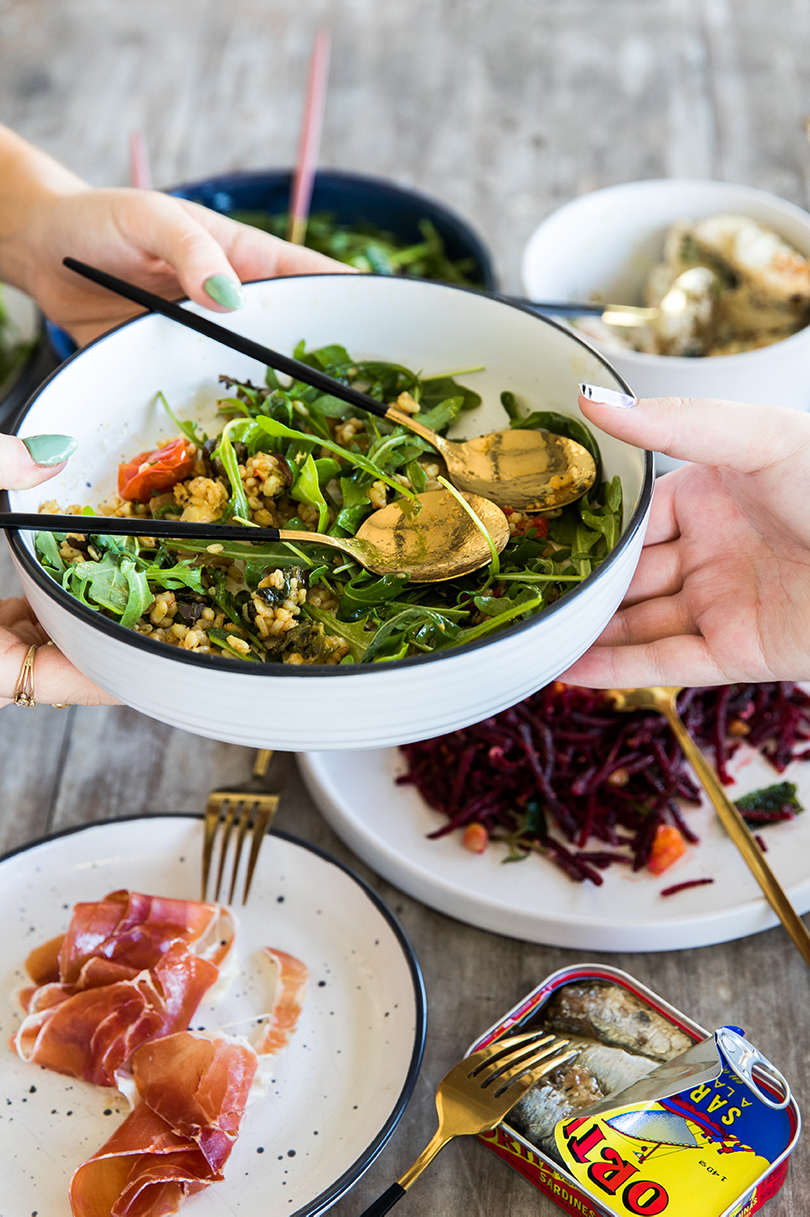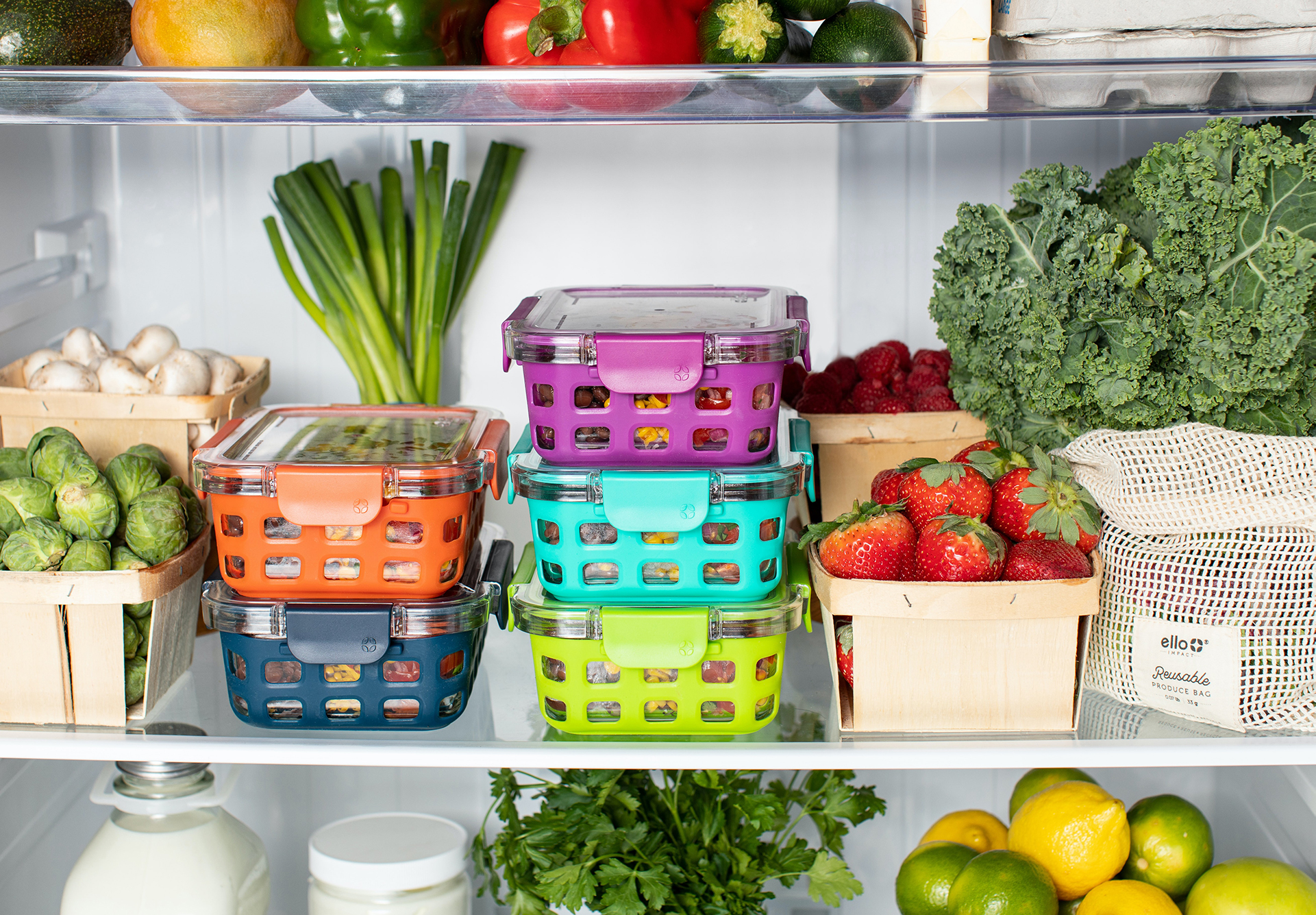When I was a child, throwing food away was simply not an option. Every bit of carrot on our plate had to be eaten and every sip of milk in our glass had to be drunk. Having five children to look after, and my dad being the only bread winner in the family, my mum had to be exceptionally resourceful and make use of every bit of food we had at home. As a child, I clearly remember my mum preparing a meal by simply serving fried cubed stale bread topped with yoghurt and mince or adding the white parts of peppers (placenta) into an omelette or steaming stale bread slices in a DIY steamer to make them edible again. Basically, saving food has been a part of my life from a very young age which is why I am really passionate about it.
Today marks the last day of Food Waste Action Week. As the aim is to raise awareness and take action to end food waste, I have decided to educate myself about food waste and its impact on climate change. Admittedly my findings have been pretty depressing. I’ve found out that a staggering 70% of the food that is wasted comes from our homes. According to a study done by Food and Agriculture Organisation of the United Nations “In wealthier countries, more than 40% of food loss and waste occurs at the retail and consumer stage. This is largely due to consumer behaviour and food supply exceeding demand (…) Food losses in developing countries are caused largely by poor harvesting techniques, insufficient storage and cooling facilities, and a lack of infrastructure for food transport and marketing.”


Photo by Eduardo Prim on Unsplash
Another fact about food and food waste is it’s one of the major drivers of climate change. We don’t realise but when we throw away a leftover meal or a banana, we are not only wasting food, but also wasting our limited resources like land, energy and water. By reducing food waste, we can save money and mitigate our impact on the environment as individuals.
According to Climate-Smart Food, a book written by Dave Reay, Executive Director at Edinburgh Climate Change Institute, “One in nine people alive today don’t have enough to eat, while two billion of us consume too much.(…) At the same time a billion people are lacking enough protein, one-third of children under five are stunted and some two billion people suffer from micronutrient deficiencies. Tragically, around a quarter of all the food produced for human consumption doesn’t even get eaten. At an annual cost of nearly $1 trillion, global food loss and waste accounts for an estimated 8 per cent of total greenhouse gas emissions—if wasted food were a country it would come behind only China and the US in the list of biggest emitters on the planet.”


Photo by Nathan Dumlao on Unsplash
Photo by S O C I A L . C U T on Unsplash
Here are some more staggering numbers from Climate-Smart Food regarding food waste in the UK:
Bread: “In the UK over 700,000 tonnes are thrown away each year—the equivalent of more than two million loaves a day and about one-third of all the bread we buy.”
Potatoes: “Each year in the UK, we discard some 320,000 tonnes that could have been eaten.”
Milk: “Milk is one of the most wasted foods in the UK at 290,000 tonnes each year.”
Chicken: “Each year in UK households, we waste 110,000 tonnes of chicken meat.”
Orange Juice: “In the UK we waste approximately 50,000 tonnes of orange juice each year.”
Bananas: “We waste over a million bananas a day in Britain, at a cost to the climate of over 30,000 tonnes of emissions annually.”
Rice: “In Britain rice wastage amounts to over 40,000 tonnes each year and so the equivalent of around 60,000 tonnes of greenhouse gas emissions.”


Photo by Victoria Shes on Unsplash
Photo by Varun Gaba on Unsplash
These findings demonstrate that our lifestyles especially in industrialised, developed countries have to become more sustainable and our consumer habits need to change to reduce our impact on the environment. To do that, we can start tackling food waste at home first.
Here are some tips to fight against food waste which may hopefully help you.
Tips to Fight Against Food Waste
1 – Repurpose your Food
- With the leftover vegetables from a roast dinner, you can make either vegetable omelette, frittata or blend them into a soup. With the leftover chicken, you can make chicken pilaf.
- You can repurpose ripe fruit into smoothies.
- Stale bread is good for making breadcrumbs or croutons.
- You can make French toast with slices of stale bread by dipping them in an egg and milk mixture and frying them. You can also use them for bread & butter pudding.
- You can simmer vegetable scraps to make vegetable broth. You can use fruit scraps to make flavoured water.
- You can fry your potato skins for a quick, easy snack.
2- Steam
To rescue your stale bread, pour a cup of water into a pan. Place slices of stale bread in a heat resistant metal tub and place it in the pan. Bring the water to boil and cover the pan with a lid. After a few minutes, steam will soften your bread and make it edible again. This method may not work on sliced supermarket breads, because they go mouldy, not stale.
3- Compost
You can compost any unused or re-purposed food scrap to use as a fertiliser in the garden.
4- Small Portions
Serve food in small portions. You can always top it up if you need more.
5- Freeze
If there is any leftover food and you don’t want to eat the same food two days in a row, you can freeze it. As a general rule, frozen food should be eaten within 3 months of freezing. When it passes this date, your food may start showing signs of freezer burn. So, it’s important to write a date on your freezer bag or tub before you put it in the freezer.
6- Make a Meal Plan
Before going shopping, check your fridge and cupboards first to see what you need and make a weekly meal plan. So, you only buy what you need for that week. This way, no food is unused.
7- Best Before / Use by Date
Food that is passed its “best before date” may no longer be at its peak quality but it may still be safe to eat as long as it’s not mouldy or rotten. Mostly by using your common sense, you can make a decision about this type of food. But you should definitely keep an eye on meat or dairy stuff to make sure they are consumed before or on their “use by date”. It’s not safe to eat once food passes its “use by date”, even if it may look and smell ok.
8- Use Apps
- Olio: You can give your unwanted or surplus food away to your neighbours through this app. https://olioex.com/
- Too Good to Go: You can prevent food from ending in the bin by buying from your favourite cafes, restaurants, hotels half price through this app. https://toogoodtogo.co.uk/en-gb
- Gander: You can get updates on reduced food in your area through this app. https://gander.co/
- No Waste: This is a food inventory list app where you can track your food in your home. Through this app, you can sort your food according to expiry date, name and category. https://www.nowasteapp.com/
9- Save Surplus and Odd Food
Both Oddbox in the UK and Imperfect Foods in the US tackle food waste by rescuing odd & surplus food from the farm. Subscribing to their weekly delivery will not only help prevent food from being wasted, but it would also force you to try different type of food and recipes.
10- Fridge / Freezer Door
The less you open your fridge and freezer door, the better.
11- First in, First Out
Organise your food in the fridge according to “First in First Out” rule. Put freshly bought food at the back of your fridge and the older items at the front.
12- Store your Food Correctly
Store your potatoes and onions in a cool, dark place. Wrap your leafy greens in a damp kitchen towel and place them in a tub and keep it in the fridge. Store your herbs in a jar with some water and store them in the fridge. For further reading check out the below websites. They are really good resources for food storage tips and tackling food waste.
https://www.lovefoodhatewaste.com/
Join me on the fight against food waste. I believe we can make wasting food a thing of the past, if we all make small changes in our consumer habits.
Please spread the word.


Thank you for these tops tips, it has really made me think more about food waste and what I can do
Thank you Andy. I am so glad that you’ve found it useful.